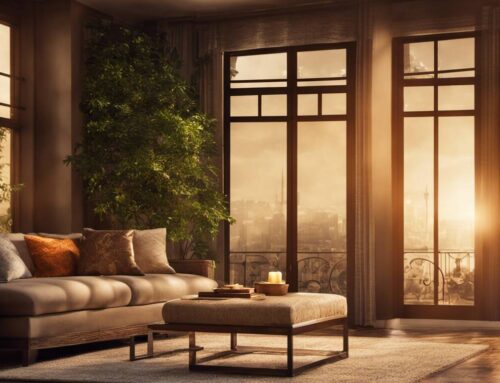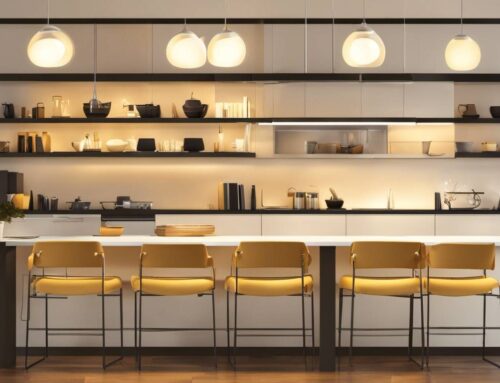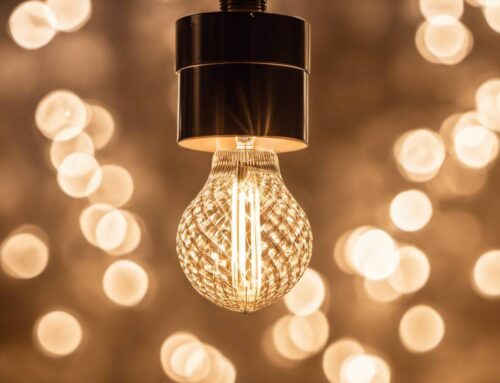Lighting is an essential aspect of any space, whether it’s a home, office, or industrial facility. It not only illuminates the space but also sets the mood and improves productivity. However, with the growing demand for energy-efficient lighting, many people are confused about the terms efficacy and efficiency. In this article, we will explain the difference between efficacy vs. efficiency in regards to lighting and which one is more important.
Efficacy vs. Efficiency: What’s the Difference?
Before we dive into the importance of efficacy vs. efficiency in regards to lighting, let’s first understand what these terms mean.
- Efficacy is a measure of how well a light source converts electrical energy into visible light. It is expressed in lumens per watt (lm/W) and is used to determine the efficiency of a light source. In simpler terms, efficacy is a measure of how efficiently a light source produces visible light.
- Efficiency, on the other hand, is a measure of how well a lighting system converts electrical energy into usable visible light. It takes into account the efficiency of the light source, as well as other factors such as the ballast, reflector, and other components. Efficiency is expressed as a percentage, and the higher the percentage, the more efficient the lighting system.

The Importance of Efficacy in Lighting
Efficacy is an essential factor to consider when choosing a light source. It determines how much light you can get for each watt of power consumed, making it a critical factor in energy efficiency. Here are some reasons why efficacy is essential in lighting:
- Energy Savings: Light sources with high efficacy consume less power to produce the same amount of light, resulting in significant energy savings.
- Environmental Benefits: Energy-efficient lighting results in lower carbon emissions and reduces the strain on natural resources.
- Cost Savings: By using energy-efficient lighting, you can reduce your electricity bills and save money in the long run.
The Importance of Efficiency in Lighting
While efficacy is crucial in determining the energy efficiency of a light source, it is not the only factor that affects the overall efficiency of a lighting system. Other factors, such as the ballast, reflector, and other components, also play a significant role in determining the efficiency of a lighting system. Here are some reasons why efficiency is important in lighting:
- Lower Heat Generation: Efficient lighting systems generate less heat, which can lead to lower cooling costs and increase the lifespan of the lighting system.
- Longer Lifespan: Efficient lighting systems have a longer lifespan, resulting in lower maintenance costs and replacement costs.
- Better Lighting Quality: Efficient lighting systems provide better lighting quality, resulting in improved visibility and productivity.
The Pros and Cons of High Efficacy Lighting
High efficacy lighting has become increasingly popular in recent years, primarily due to its energy efficiency. Here are some of the pros and cons of high efficacy lighting:
Pros:
- Energy-efficient and cost-effective
- Reduced carbon emissions
- Long lifespan
Cons:
- Limited color options
- Overall lower quality light
- Usually lower CRI options
The Pros and Cons of High Efficiency Lighting
High efficiency lighting systems are designed to provide maximum lighting output with minimal energy consumption. Here are some of the pros and cons of high efficiency lighting:
Pros:
- Reduced energy consumption and cost savings
- Longer lifespan and lower maintenance costs
- Better lighting quality and improved productivity
- Reduced heat generation
Cons:
- Higher upfront cost
- May require specialized equipment or installation
Frequently Asked Questions About Efficacy and Efficiency in Lighting
Which is more important: efficacy or efficiency in lighting?
Both efficacy and efficiency are important factors to consider when choosing lighting for your space. Efficacy determines how much light you can get for each watt of power consumed, while efficiency takes into account the overall performance of the lighting system.
Can high efficacy lighting provide sufficient lighting for my needs?
Yes, high efficacy lighting can provide sufficient lighting for most needs. However, it may not be suitable for certain applications that require high levels of brightness or color accuracy.
Is high efficiency lighting more expensive than traditional lighting?
High efficiency lighting may have a higher upfront cost than traditional lighting. However, it can result in significant cost savings in the long run due to its energy efficiency and longer lifespan.
Can I retrofit my existing lighting system to be more efficient?
Yes, you can retrofit your existing lighting system to be more efficient by upgrading to energy-efficient light sources, installing new ballasts and reflectors, and implementing lighting controls.
Finding the Right Balance
In conclusion, when it comes to efficacy vs. efficiency in regards to lighting, both are crucial factors to consider. Efficacy determines how well a light source converts electrical energy into visible light, while efficiency takes into account the overall performance of the lighting system. It’s important to find the right balance between efficacy and efficiency to ensure optimal lighting performance and energy efficiency. By understanding the pros and cons of both high efficacy and high efficiency lighting, you can make an informed decision about which lighting solution is best for your needs.



